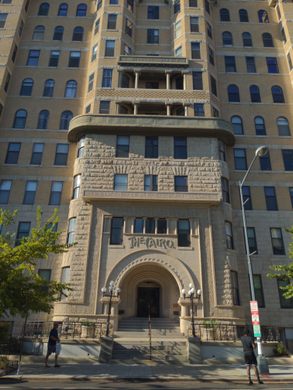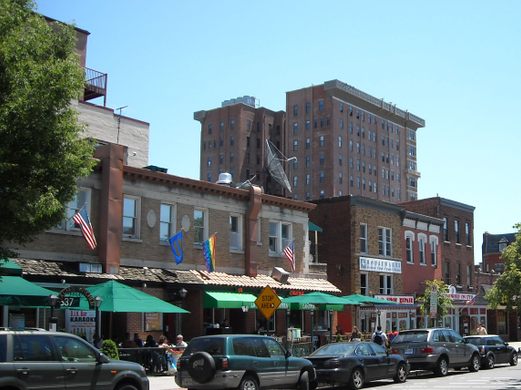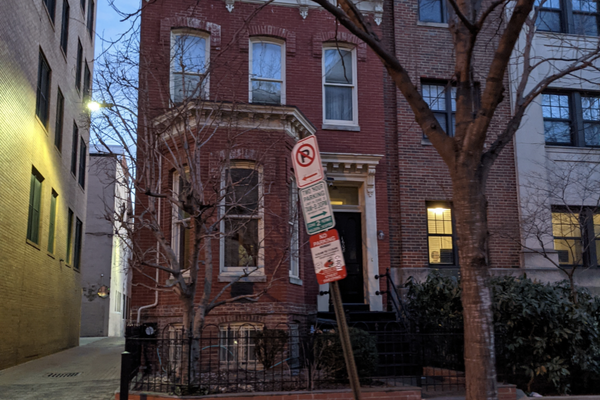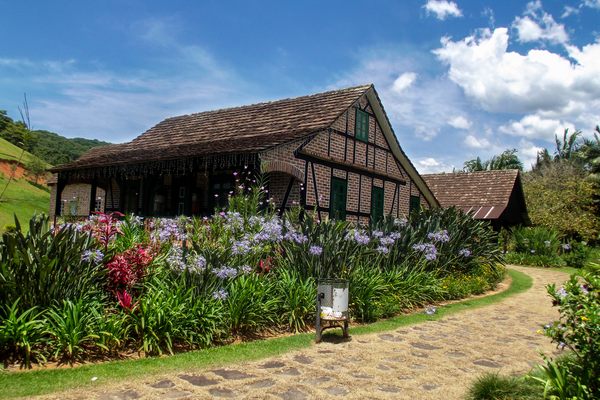The Cairo
This unacceptably tall building was the real reason for Washington, D.C.'s skyscraper ban.
Washington D.C.’s residential neighborhoods are typified by low rowhouse skylines and walkable tree-lined sidewalks. A widespread myth among tourists and even longtime residents is that the lack of skyscrapers is the result of a deliberate effort to preserve views of the Washington Monument along the National Mall. The truth is that it was never that carefully thought out. The height limit was an almost random legislative counterpunch to a single controversial apartment building known as the Cairo.
The largest privately owned building in Washington up until this point was the 9-story Sun Building, and most row houses were standard 3-story brick edifices. The 160-foot-tall, 12-story Cairo building opened in 1894 and immediately dwarfed the surrounding neighborhood, inciting an uproar and eventually leading to the height limit. Unlike cities like New York and Chicago that were pressed for downtown real estate, critics argued that there was no reason for such a massive building in sleepy Washington.
The Commissioners of the District of Columbia were soon inundated with complaints that reflected fears of depreciated property values and even natural disasters. Not only would the massive Cairo shut out light and air, but its upper stories stood beyond the reach of D.C. fire engines. Some predicted a calamitous fire that could send bricks and debris raining down on neighboring properties.
Additional concerns were focused closer to ground level. In 1895 an adjoining neighbor named Mr. Nolan brought a $10,000 lawsuit against the building owners “for loss of sleep and comfort” as a result of the around-the-clock blasting from “steam boilers, engines, exhaust pipes and electrical dynamos” in the Cairo basement.
The onslaught of local criticism was irresistible to the D.C. Board of Commissioners, who quickly moved to institute a citywide 90 foot height limit for apartment buildings. The Senate and House of Representatives set the rule into stone with two subsequent acts of Congress.
Historian James M. Goode notes in his survey of D.C. residential architecture that it’s because of the Cairo that “Washington has become the only major city in the United States to maintain a low skyline.” People might not consciously think about the impact of a low skyline, but some think it’s a contributing force behind why D.C. is such a walkable city.
Ecologist Eugene Odum argued that evolutionary biology imparts preferences for urban spaces that mimic life on the forest edge, which offered safe enclosure combined with good sight lines. Urban planning expert Jeff Speck takes it further and writes that streets feel more “like a room” the closer they get to a perfect 1:1 ratio of building height to street width. Much of D.C. has coincidentally stumbled into this sweet spot with short buildings and 30-foot-wide streets. This fantastic low skyline norm is perhaps the greatest legacy of the Cairo.
Know Before You Go
Despite the reams of external hatred directed at the Cairo, tenants thought that it was a pretty swank place to live. Lofty views from the rooftop garden were such a novelty at the time that people would go up there just to throw rocks off the side (presumably to the further irritation of their unhappy neighbors). The garden no longer exists, but the rooftop is still open to residents!



















Follow us on Twitter to get the latest on the world's hidden wonders.
Like us on Facebook to get the latest on the world's hidden wonders.
Follow us on Twitter Like us on Facebook